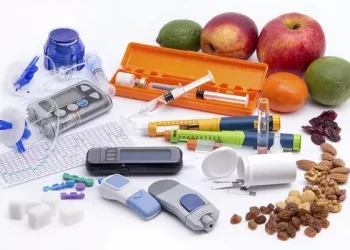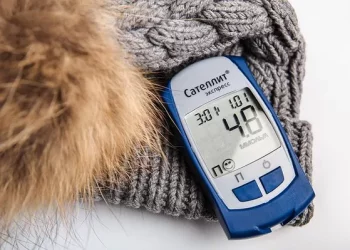Blood glucose monitoring is one of the most essential aspects of diabetes management. A glucose meter helps individuals with diabetes track their blood sugar levels, offering valuable insights into how their body is responding to food, exercise, medication, and other factors. Understanding what constitutes a “good” glucose meter reading is crucial for maintaining stable blood sugar levels and preventing long-term complications.
For those living with diabetes, knowing what to aim for in terms of glucose readings can be empowering. It allows individuals to make informed decisions about lifestyle choices, medication adjustments, and overall health. But what exactly is a “good” glucose meter reading? The answer to this question depends on various factors, including the individual’s type of diabetes, treatment plan, personal health goals, and when the reading is taken.
In this article, we will explore what constitutes a good glucose meter reading, factors that can influence blood sugar levels, and why it is important to monitor blood glucose regularly. We will also provide a comprehensive guide to interpreting your glucose meter readings for better diabetes management.
Understanding Blood Sugar Levels and Their Importance
Before diving into what a good glucose meter reading looks like, it is important to understand how blood sugar levels work and why they matter for people with diabetes.
Blood Sugar Regulation: Blood sugar, or glucose, is the primary source of energy for the body’s cells. The body naturally regulates blood glucose levels through the hormone insulin, which is produced by the pancreas. For individuals with diabetes, either the body does not produce enough insulin, or the cells become resistant to insulin, leading to difficulty managing blood sugar levels.
Hyperglycemia and Hypoglycemia: Blood sugar levels that are too high (hyperglycemia) or too low (hypoglycemia) can lead to serious health complications. Long-term high blood sugar can result in damage to the kidneys, nerves, heart, and eyes, while low blood sugar can cause symptoms like dizziness, confusion, and even loss of consciousness if left untreated.
Target Blood Sugar Range: For most people with diabetes, the goal is to maintain blood sugar levels within a target range that is close to normal. This helps prevent both short-term and long-term complications. The target range for glucose levels can vary based on individual health goals, but generally, it is important to aim for blood glucose levels that are neither too high nor too low throughout the day.
Factors That Influence Blood Glucose Levels
A number of factors can influence blood glucose levels, making it essential for individuals with diabetes to track their readings regularly. Understanding these factors helps individuals interpret their glucose meter readings accurately.
Diet: What you eat plays a significant role in your blood glucose levels. Foods that are high in carbohydrates, such as bread, rice, and sugary snacks, can cause blood sugar levels to rise. Conversely, foods high in fiber, lean proteins, and healthy fats can help maintain stable blood sugar levels.
Exercise: Physical activity helps lower blood sugar levels by increasing insulin sensitivity and promoting glucose uptake by muscle cells. However, exercise can also lead to a temporary increase in blood sugar levels, especially if it is intense or prolonged. Monitoring glucose levels before, during, and after exercise can provide insights into how exercise affects blood sugar.
Medications: Insulin and oral medications are commonly used to manage diabetes. These medications work by either increasing insulin sensitivity or providing additional insulin to help regulate blood glucose levels. The effectiveness of these medications, along with the dosage, can significantly impact glucose meter readings.
Stress: Physical or emotional stress can raise blood sugar levels by triggering the release of stress hormones like cortisol and adrenaline. This can interfere with blood glucose control and result in higher-than-normal readings, especially during periods of intense stress.
Illness: When you are sick, your body produces more stress hormones to fight infection, which can raise blood glucose levels. Infections, fevers, and even minor illnesses can cause temporary fluctuations in blood sugar levels.
Sleep: Poor or inadequate sleep can negatively affect insulin sensitivity, making it harder for your body to regulate blood glucose levels. Regular, restful sleep is essential for maintaining stable blood sugar levels.
What Is a Good Glucose Meter Reading?
A “good” glucose meter reading refers to blood sugar levels that fall within a target range recommended by a healthcare provider. These readings may vary depending on factors such as the type of diabetes, the individual’s treatment plan, and any underlying health conditions. However, there are general guidelines for what constitutes a good glucose reading.
Fasting Blood Sugar (Before Meals)
Fasting blood sugar is typically measured first thing in the morning, before eating or drinking anything. It provides valuable insight into how well the body is managing glucose after a night of fasting.
Target Range: For most people with diabetes, the target fasting blood sugar range is between 70 and 130 mg/dL (3.9 to 7.2 mmol/L). Readings within this range suggest that the body is maintaining normal glucose regulation after a period of fasting.
High Readings: If fasting blood sugar is consistently above 130 mg/dL, it may indicate poor blood sugar control, potentially requiring an adjustment in medication, diet, or exercise routine.
Low Readings: Blood sugar levels below 70 mg/dL are considered low and may indicate hypoglycemia. Symptoms of hypoglycemia include shakiness, dizziness, confusion, and weakness.
Postprandial Blood Sugar (After Meals)
Postprandial blood sugar is measured 1-2 hours after eating and reflects how the body responds to food. After consuming a meal, blood sugar levels naturally rise as the body digests and absorbs glucose.
Target Range: A good postprandial reading is typically below 180 mg/dL (10.0 mmol/L), according to the American Diabetes Association. This target helps ensure that blood glucose does not spike too high after meals.
High Readings: Blood sugar readings higher than 180 mg/dL after eating may indicate that the body is struggling to process glucose from food effectively. This could be a sign that insulin or oral medications need to be adjusted.
Low Readings: A postprandial reading lower than 70 mg/dL is considered low and may require immediate intervention with fast-acting carbohydrates to raise blood sugar levels.
Before Bed
Checking blood sugar before bed is important, especially for individuals who use insulin or other medications that lower blood sugar. Blood sugar levels can drop overnight, leading to hypoglycemia during sleep.
Target Range: A good blood sugar reading before bed is generally between 100 and 140 mg/dL (5.6 to 7.8 mmol/L). This range helps ensure that blood sugar levels are stable throughout the night and reduces the risk of hypoglycemia while sleeping.
High Readings: Bedtime blood sugar levels above 140 mg/dL may indicate that blood glucose is too high, which could be a result of poor control throughout the day.
Low Readings: Bedtime blood sugar levels below 100 mg/dL can put individuals at risk for nocturnal hypoglycemia. If blood sugar is too low before bed, it may be necessary to eat a small snack to prevent low blood sugar during the night.
Random Blood Sugar
Random blood sugar readings are taken at various times throughout the day and provide an overall picture of how well blood sugar is being managed. Random readings can help identify patterns and highlight areas for improvement.
Target Range: A good random blood sugar reading is typically below 180 mg/dL (10.0 mmol/L), although readings up to 200 mg/dL (11.1 mmol/L) may be acceptable for some individuals, depending on their treatment plan.
High Readings: Readings consistently above 200 mg/dL may indicate poor blood sugar control and should be addressed with adjustments in lifestyle or medication.
Low Readings: A reading below 70 mg/dL indicates hypoglycemia and requires immediate intervention with fast-acting carbohydrates.
Factors That Can Affect Blood Sugar Readings
While glucose meters are generally accurate, several factors can influence blood sugar readings and cause them to vary from one test to another:
Meter Accuracy: Glucose meters are generally accurate, but slight variations can occur due to factors like calibration, test strip quality, or the user’s technique. It’s essential to follow the manufacturer’s instructions for proper use and perform regular calibration if required.
Test Strip Expiration: Expired test strips can affect the accuracy of blood glucose readings. Always check the expiration date on test strips and store them according to the manufacturer’s guidelines.
User Technique: The way blood samples are collected and the way the meter is used can influence readings. For accurate results, ensure that hands are clean and dry, and blood is applied to the test strip correctly.
Temperature and Altitude: Extreme temperatures or high altitudes can affect blood glucose readings. Always test in a temperature-controlled environment and avoid testing at extreme altitudes unless specified by the meter manufacturer.
Conclusion
A good glucose meter reading is one that falls within the target range recommended by your healthcare provider. Maintaining blood glucose levels within a healthy range is essential for managing diabetes and preventing complications. Regular monitoring of blood glucose levels allows individuals to make informed decisions about their diet, exercise, medication, and overall health. By understanding what constitutes a good glucose meter reading and how to interpret results, individuals with diabetes can take control of their health and make proactive steps toward maintaining stable blood sugar levels. Always work closely with your healthcare provider to establish personalized targets and strategies for blood glucose management that align with your specific needs and goals.
Related topics:
How Does a Glucometer Measure Blood Sugar Accurately?
























